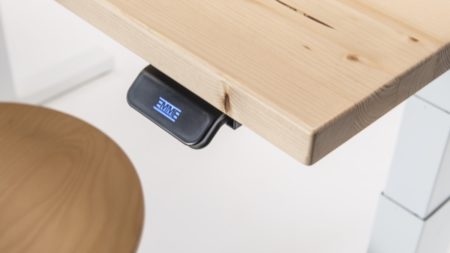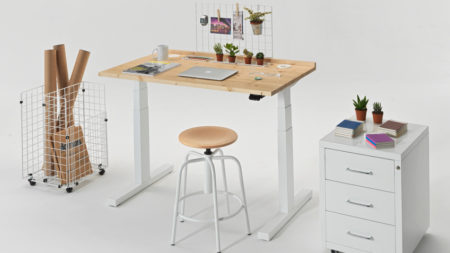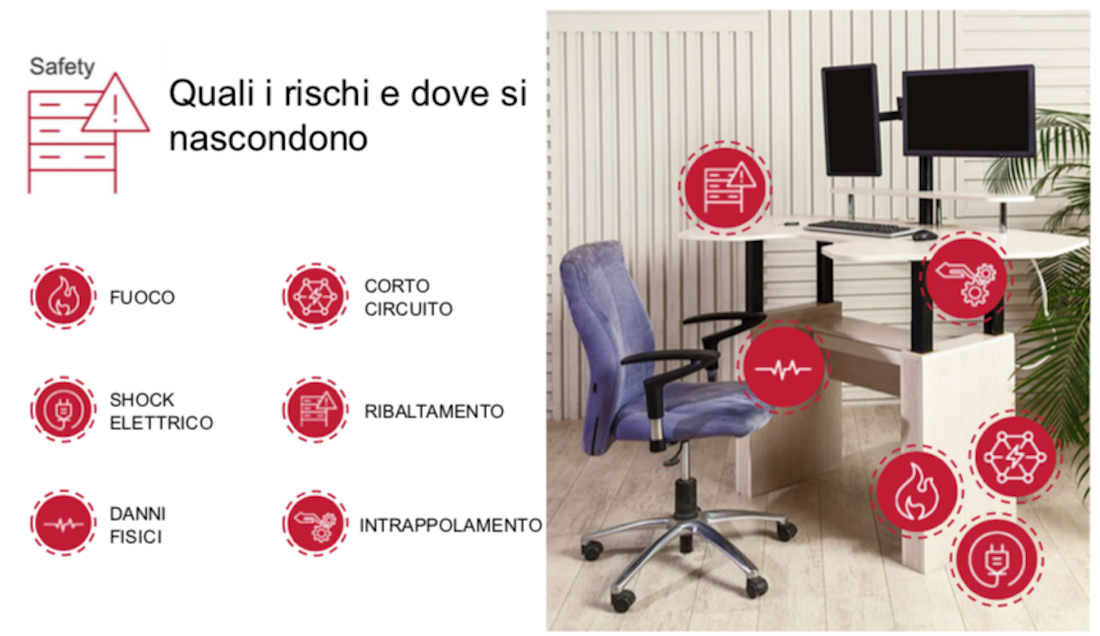
On WOW! we are talking for several years about height adjustable desks and their advantages for workers’ health.
Linak, the world’s leading manufacturer of electric linear actuators and promoter of healthier lifestyles in the office has summarized the healthy benefits in a fun video series and in an awareness campaign.
However the spread of sit-stand desks – sometimes excessively cheap – requires to be alerted about its potential risks.
UL explains what are the possible accidents that a height-adjustable desk can cause and defines the reference standard to assess its safety.
The market for height adjustable desk is experiencing great growth. The demand for solutions that offer ergonomic design in addition to aesthetic flexibility is expected to drive the global standing desk market to $2.8 billion by 2025, according to Ricerca e Mercati.
According to Csil “2019 The European market for office furniture” research, office desking in Europe represents 34% of the total office furniture production, recording a 3.9% average growth in the last two years to a value of € 3,047 million. 37% of this value is represented by height adjustable desks. The use of this kind of product has increased dramatically over the last few years as its incidence was less than 20% in 2012.
A clear indicator is Linak’s turnover for office desk linear actuators which in 2019 recorded + 18% compared to the previous year.
In Scandinavia, the use of sit-stand desks is mandatory, while in the Netherlands, and generally throughout northern Europe, this is a long-established and regulated solution.
Although the regulations allow the adoption of manual height adjustment mechanisms, the majority of client companies prefer electric mechanism and sometimes in IoT version to control and manage the desk via app.
The situation is very different in other European countries where the use of height-adjustable desks has spread rapidly and spontaneously only in the last few years, but there are no legislative decrees that require them to provide clear information to assess their safety.
As written in a previous article, the reference standard for sit stand desks is UNI EN 527-1: 2011 which classifies four types of desks based on the height adjustment system.
Height-adjustable desks are intended to bring several benefits, at the same time, they come with some potential risks, including mechanical concerns such as ability to support weight-bearing loads, stability, pinch points/entrapment, electrical concerns related to shock/fire, flammability to ensure that work surfaces, larger than 3 square meters, don’t significantly contribute to/or worsen a structure fire.
Another risk is the possibility of collision of the desk top against objects or people; in this regard, Linak allows the integration in most of its linear actuators of compact anti-collision devices capable of blocking and reversing the movement of the desk top when obstacles are detected.
Incidents may occur and can be extremely costly, especially if manufacturers sell in markets like in the U.S.
In some municipalities, local authorities known as Authorities Having Jurisdiction (AHJ), require a third party certification prior to installation in commercial or office settings. The Occupational Safety and Health Administration (OSHA) requires third-party certification of height adjustable desks to support a safe workplace.
In the event of litigation in the United States, third-party product certification is taken into consideration by the jury in assessing the manufacturer’s liability for damage or accident; if a manufacturer has certified his product he shows that he has tried to do everything possible to market a safe product.
UL 962 Standard for Household and Commercial Furnishings, is the primary standard for evaluation of height adjustable desks to verify the mechanical, electrical and fire safety during recommended use as well as foreseeable misuse.
It helps manufacturers mitigate risk of litigation as a third party evaluation reveals potential safety issues early and demonstrates a proactive stance toward ensuring product safety. Linak actuators are UL 962 global level certified.
Manufacturers that can get ahead of regulatory compliance may have an advantage in the long run.
Identifying potential health and safety hazards, and pursue appropriate certifications can help to avoid product downtime due to rejections by local authorities and encourage workers who are seeking flexibility and modernity that these new products can offer.
And when manufacturers have better products to offer, workers are more comfortable, workplaces are more productive, and everyone benefits in the end.
Thanks to UL and Linak for collaboration.



















